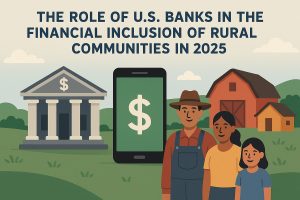Student debt has become a pressing crisis in the United States, impacting millions of borrowers and altering the financial trajectories of entire generations. As the cost of higher education continues to rise, students increasingly rely on loans, often facing repayment periods that span years or even decades.
Managing student debt effectively is crucial for achieving financial stability, reducing stress, and building a secure future. This article delves into actionable strategies for tackling repayment challenges, leveraging available resources, and developing a proactive plan to ultimately achieve a debt-free future.
Understanding your debt: the first step to management

To effectively manage student debt, borrowers must first gain a clear understanding of their loan details. Federal loans, for example, generally provide more borrower-friendly features compared to private loans. These options include income-driven repayment (IDR) plans, which calculate monthly payments based on the borrower’s income and family size, offering relief for those with limited earnings.
Additionally, federal loans may offer extended repayment terms, which reduce the monthly payment amount but can result in higher total interest costs over time. By knowing the type of loan, interest rates, and available repayment options, borrowers can make informed decisions to manage their debt effectively.
Additionally, borrowers should review the interest rates associated with their loans. Federal loans often have fixed rates, while private loans may feature variable rates that fluctuate over time. Knowing these details can help borrowers make informed decisions about refinancing or consolidating their loans.
Refinancing, where borrowers take out a new loan to replace existing ones at a lower interest rate, is a popular strategy for private loans. However, this option may not be ideal for federal loan holders, as it can result in the loss of benefits like loan forgiveness or income-driven plans. Borrowers must weigh the pros and cons of each repayment option to align with their financial goals.
Budgeting and prioritizing repayments
Effective debt management begins with creating a well-structured budget. Borrowers should start by thoroughly analyzing their monthly income and categorizing expenses to understand their financial situation. This process helps identify how much can be reasonably allocated toward loan repayments without compromising essential needs. By setting realistic spending limits and prioritizing loan payments, borrowers can avoid unnecessary overspending while staying on track to reduce their debt.
Additionally, tracking expenses regularly and adjusting the budget as needed ensures that financial goals remain achievable and progress toward eliminating debt continues steadily. A disciplined approach to budgeting is a cornerstone of successful debt management. Regular evaluations of income and expenses also allow borrowers to identify areas where they can cut costs and redirect funds toward faster debt repayment.
A common and effective strategy for managing debt is the “debt snowball” method. This approach involves focusing on paying off the smallest loans first while maintaining minimum payments on larger loans. By quickly eliminating smaller balances, borrowers gain a sense of accomplishment and build momentum, which can motivate them to stay committed to their repayment plan. This psychological boost can be especially helpful for those who feel overwhelmed by multiple debts.
Alternatively, the “debt avalanche” method takes a more cost-effective approach by prioritizing loans with the highest interest rates. By tackling high-interest debts first, borrowers reduce the total amount of interest paid over time, saving money in the long run. Both methods offer distinct advantages, depending on the borrower’s goals and financial priorities. Borrowers should assess their personal financial situation to choose the method that best aligns with their needs.
Automation can also play a crucial role in repayment strategies. Setting up automatic payments not only ensures timely payments but may also qualify borrowers for interest rate discounts offered by some lenders. This approach eliminates the risk of missed payments, which can lead to penalties and damage to credit scores.
Consistency, combined with a structured plan, is key to avoiding financial pitfalls and staying on track to becoming debt-free. By leveraging technology and strategic methods, borrowers can manage their debts more effectively and build a stronger financial future.
While focusing on debt repayment is critical, it’s equally important to establish an emergency fund to handle unexpected expenses. Without a financial safety net, borrowers risk relying on credit cards or taking on additional loans when faced with emergencies, which can worsen their debt situation. Setting aside even a small portion of income—such as $25 to $50 per month—into an emergency fund can provide a buffer and prevent setbacks in the repayment process.
Balancing debt payments with savings might seem challenging, but it ensures long-term financial stability. Having an emergency fund allows borrowers to remain focused on their repayment goals without being derailed by unplanned costs, such as medical bills or car repairs. This proactive measure safeguards progress and reduces the stress associated with financial uncertainty.
Leveraging tools and resources to reduce debt
- federal programs and benefits:
- Public Service Loan Forgiveness (PSLF): Available for borrowers working in eligible public service or non-profit roles.
- Teacher Loan Forgiveness: Specific to educators meeting certain criteria.
- Income-Driven Repayment (IDR): Caps payments based on income and family size.
- employer assistance programs:
- Many employers now offer student loan repayment assistance as part of their benefits packages.
- Some companies provide matching contributions toward loan payments, similar to retirement savings plans.
- scholarships and grants:
- Retroactively apply for grants or scholarships that can be used to offset student loan balances.
Long-term planning for a debt-free future
Managing student debt effectively involves more than simply making regular payments; it requires a proactive and holistic approach to financial planning. Building an emergency fund is a crucial first step, as it provides a financial safety net for unexpected expenses, such as medical bills or car repairs, ensuring borrowers can continue meeting loan obligations without disruptions.
Additionally, finding ways to increase income—whether through side gigs, freelancing, or pursuing career advancements—can significantly accelerate debt repayment. Combining these efforts with disciplined budgeting and strategic loan management allows borrowers to reduce their financial stress and work toward a stable, debt-free future more efficiently.
Investing in financial literacy is a vital component of effective student debt management. Gaining a solid understanding of personal finance fundamentals—such as interest compounding, budgeting, and the long-term impact of financial decisions—equips borrowers to navigate their obligations with confidence.
Once loans are paid off, redirecting the money previously allocated for repayments into savings or investments can pave the way toward achieving future goals, like purchasing a home, starting a business, or building retirement wealth. By combining financial education with a proactive and strategic repayment plan, borrowers can not only manage their student debt effectively but also reclaim financial independence and secure long-term stability.






